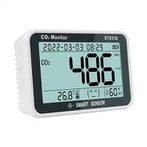How to select the electrode of pH meter and technical communication
1. Selection of shell material:
The shell of the pH electrode generally adopts two kinds of PC plastic (polycarbonate) shell and glass shell. The PC shell is resistant to collision and impact, but the applicable temperature is <80oC. And it is susceptible to corrosion in high alkali solution and some media. The glass casing is suitable for a temperature of 0-150oC, and is generally not corroded except for hydrofluoric acid solution, but it is easy to be damaged by collision. If it is used in a special medium environment, please inform us before purchasing, so that we can choose a more suitable shell material for you.
2. Selection of liquid junction:
The liquid junction is the connection part that communicates the external reference solution and the measured solution, and requires stable and reproducible potential. Generally, liquid junction materials include fiber material, ceramic core, glass grinding mouth and other media. Fiber material is generally used in plastic case electrodes, and its solution seeps out faster and is not easy to block; ceramic core has good corrosion resistance, and the liquid junction potential The stability and reproducibility are good, and it can be used in high temperature medium, and it is the most widely used liquid junction material; the contact area between the glass grinding interface and the solution and the seepage speed are large, and it is suitable for the weak ionic strength. , Determination of high viscosity, turbid liquid or colloidal solution.
3. Selection of pH-sensitive glass membrane:
The pH-sensitive glass membrane is melt-blown from lithium glass with hydrogen function, and is generally spherical. Most electrodes use conventional sensitive glass membranes, but there are sensitive glass membranes for high-temperature media, and sensitive glass for high-temperature strong acid media. Membranes, sensitive glass membranes for high-temperature steam sterilization (130oC), and low-resistance sensitive glass membranes (for the determination of pure water), etc., should be selected according to different situations.
4. Selection of reference electrode:
Conventionally, Ag/Agcl reference electrodes are used, but the general Ag/Agcl reference electrodes are easily dissolved at high temperature and the potential is unstable, while the Ag/Agcl reference electrode with capillary structure has a very stable reference potential, suitable for Used under conditions of high temperature and long-term continuous testing.
5. Selection of electrode socket:
The most commonly used socket for pH electrodes is BNC type (also known as Q9 type), in addition to other types, it mainly depends on the matching of the corresponding instrument. (Generally, the last letter of the electrode model indicates the socket type).






